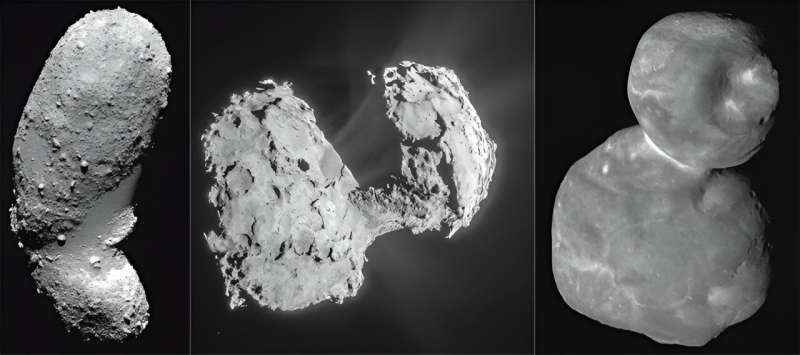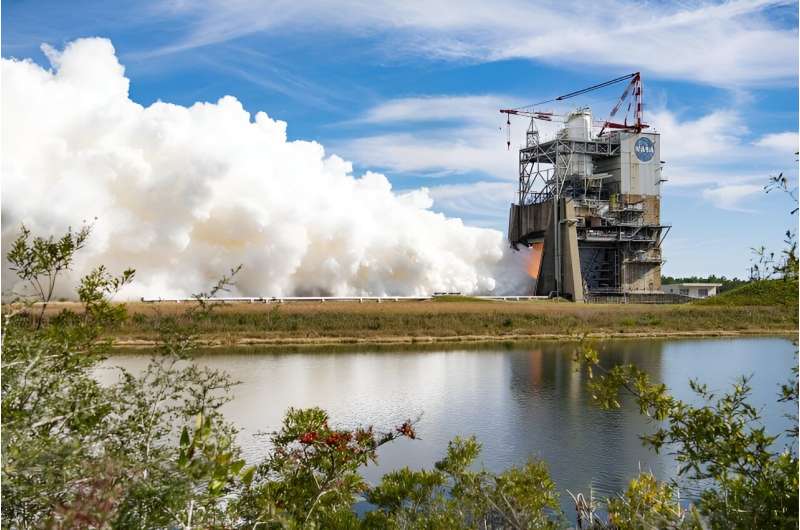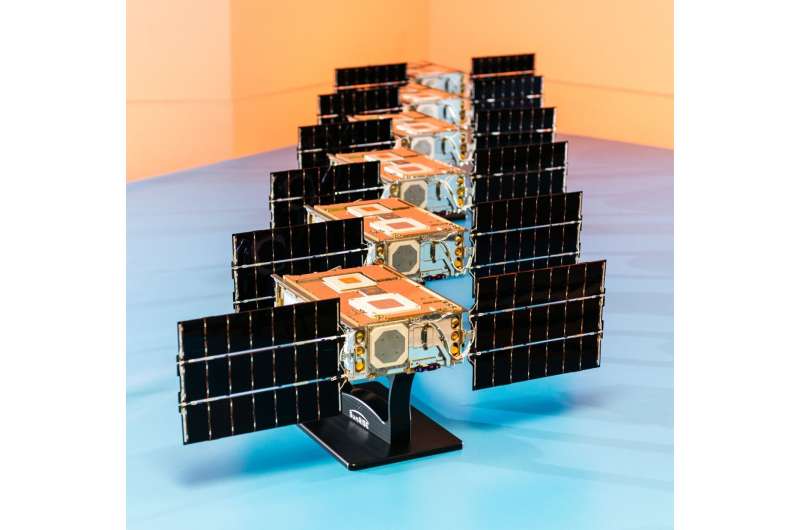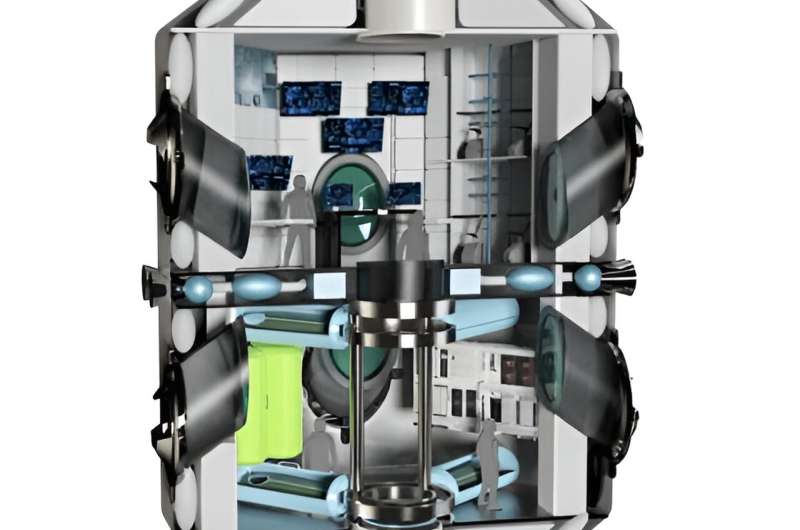
Copernical Team
Dutch astronomers prove last piece of gas feedback-feeding loop of black hole
 Three astronomers from the Netherlands have proven that gas that was previously heated near a supermassive black hole and flowed to the outskirts of the galaxy and cooled down, is moving back towards the black hole. While there had been indirect evidence for this theory, this is the first time that the cooled gas moving toward the black hole has actually been observed. The researchers made their
Three astronomers from the Netherlands have proven that gas that was previously heated near a supermassive black hole and flowed to the outskirts of the galaxy and cooled down, is moving back towards the black hole. While there had been indirect evidence for this theory, this is the first time that the cooled gas moving toward the black hole has actually been observed. The researchers made their Hanwha turns to Eutelsat OneWeb andfor of satellite connectivity in South Korea
 Hanwha Systems, a major South Korean technology conglomerate, has recently entered into a distribution partnership agreement with Eutelsat OneWeb, part of the renowned Eutelsat Group and the world's first GEO-LEO satellite operator. This strategic collaboration aims to offer high-speed, low latency connectivity services across South Korea, signaling a significant advancement in the nation's comm
Hanwha Systems, a major South Korean technology conglomerate, has recently entered into a distribution partnership agreement with Eutelsat OneWeb, part of the renowned Eutelsat Group and the world's first GEO-LEO satellite operator. This strategic collaboration aims to offer high-speed, low latency connectivity services across South Korea, signaling a significant advancement in the nation's comm UK's NSTF Selects ARS for Groundbreaking Acoustic Testing Project
 Acoustic Research Systems (ARS), a leader in Direct Field Acoustic Testing (DFAT) solutions, has been awarded a contract to provide a full-scale, state-of-the-art DFAT turnkey solution to the UK's National Satellite Test Facility (NSTF). This landmark contract not only underlines ARS' position as a frontrunner in the DFAT domain but also marks a pivotal moment in the company's expansion, especia
Acoustic Research Systems (ARS), a leader in Direct Field Acoustic Testing (DFAT) solutions, has been awarded a contract to provide a full-scale, state-of-the-art DFAT turnkey solution to the UK's National Satellite Test Facility (NSTF). This landmark contract not only underlines ARS' position as a frontrunner in the DFAT domain but also marks a pivotal moment in the company's expansion, especia Direct-to-phone satellite connectivity emerging as a billion-dollar market by 2027
 Paris, France (SPX) Dec 01, 2023
The Mobile Satellite Services (MSS) industry is currently witnessing a pivotal transformation, as highlighted in the latest edition of Euroconsult's 'Prospects for Direct to Handheld and IoT Markets'. This transformative shift is primarily attributed to the emergence of direct-to-device satellite solutions, particularly direct-to-phone services. These advancemen
Paris, France (SPX) Dec 01, 2023
The Mobile Satellite Services (MSS) industry is currently witnessing a pivotal transformation, as highlighted in the latest edition of Euroconsult's 'Prospects for Direct to Handheld and IoT Markets'. This transformative shift is primarily attributed to the emergence of direct-to-device satellite solutions, particularly direct-to-phone services. These advancemen Interstellar ice may hold the key to understanding life's origins
 Recent research, as detailed in a study published in ACS Central Science, presents a novel perspective on the origins of life's essential components, particularly amino acids. The study posits that carbamic acid, a simple amino acid, may have formed in the vicinity of stars or planets within interstellar ices. This groundbreaking hypothesis provides a new avenue for understanding how the buildin
Recent research, as detailed in a study published in ACS Central Science, presents a novel perspective on the origins of life's essential components, particularly amino acids. The study posits that carbamic acid, a simple amino acid, may have formed in the vicinity of stars or planets within interstellar ices. This groundbreaking hypothesis provides a new avenue for understanding how the buildin Scientist hails accuracy of satellite data
 The Macao Science Satellite 1 network, China's leading space-based geomagnetic monitoring system, has achieved remarkable feats and attracted scientists from around the world, according to a top member of the program.
Zhang Keke, director of the Macao Institute of Space Technology and Application, said in an exclusive interview on Tuesday that research into geomagnetic fields is one of the
The Macao Science Satellite 1 network, China's leading space-based geomagnetic monitoring system, has achieved remarkable feats and attracted scientists from around the world, according to a top member of the program.
Zhang Keke, director of the Macao Institute of Space Technology and Application, said in an exclusive interview on Tuesday that research into geomagnetic fields is one of the Contact binary asteroids are common, but we've never seen one form. Now, researchers want to make one

Ever want to play a game of cosmic billiards? That's commonly how the DART mission was described when it successfully changed the orbit of a near-Earth asteroid last year. If you want an idea of how it works, just Google it and an Easter egg from the search giant will give you a general idea. But DART was more like trying to brute force a billiards break—there are many other things you can do with a set of asteroids and impactors on the galactic stage. One of the more interesting is to try to force two asteroids together to form a "contact binary"—the goal of a mission design put forward by a group of scientists from Cornell in a recent paper in Acta Astronautica.
Colby Merill and his colleagues at Cornell's Mechanical and Aerospace Engineering department first explain why such a mission would be a good idea.
NASA tests in-flight capability of Artemis moon rocket engine

NASA conducted the third RS-25 engine hot fire in a critical 12-test certification series Nov. 29, demonstrating a key capability necessary for flight of the SLS (Space Launch System) rocket during Artemis missions to the moon and beyond.
NASA is conducting the series of tests to certify new manufacturing processes for producing RS-25 engines for future deep space missions, beginning with Artemis V.
NASA's 6-pack of mini-satellites ready for their moment in the sun

Most NASA missions feature one spacecraft or, occasionally, a few. The agency's Sun Radio Interferometer Space Experiment (SunRISE) uses half a dozen. This month, mission members completed the construction of the six identical cereal box-size satellites, which will now go into storage and await their final testing and ride to space.
A detailed design for a space station at sun–Earth L2

New ideas in space exploration come from all corners, and, by and large, the community welcomes anybody interested in the field. Having just read "A City on Mars," it seems that even people who disagree with the idea that the age of space settlement is imminent will be accepted into the fold by enthusiasts. Now, a new entrant has joined—Daniel Akinwumi is a Nigerian graduate student at the University of Strathclyde who recently posted his master's thesis to ResearchGate detailing the design of the "intergalactic hub," or I-HUB.
The introductory section of the thesis lays out many of the challenges familiar to those interested in space habitats. These include the importance of robots, a completely closed-loop recycling system, and novel radiation shielding. Mr. Akinwumi also provides a thorough literature search and mentions several other design concepts similar to the I-HUB.
One crucial design choice is how to get the system into space.

